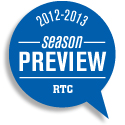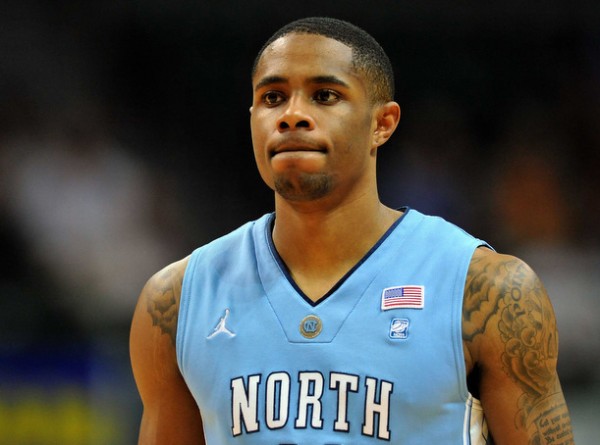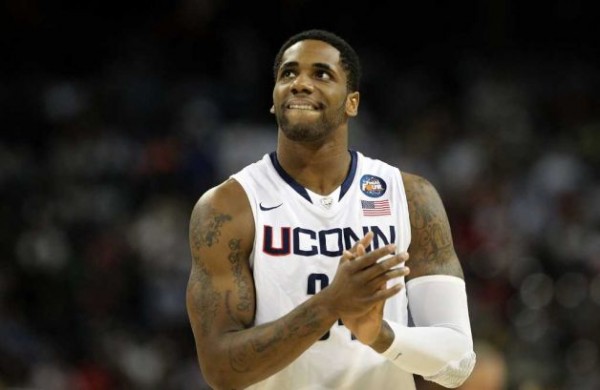Considering the Highest Impact Transfers in 2012-13
Posted by Chris Johnson on October 23rd, 2012 Chris Johnson is an RTC Columnist. He can be reached @ChrisDJohnsonn.
Chris Johnson is an RTC Columnist. He can be reached @ChrisDJohnsonn.
There were few topics more thoroughly dissected and debated this offseason than transfers. The discourse began not one month after the coronation of last season’s National Champion Kentucky Wildcats with Jared Uthoff’s highly-publicized transfer tug-of-war with Wisconsin coach Bo Ryan. It continued when the NCAA released word (via ESPN’s Outside the Lines program) of its intentions to review transfer guidelines as part of a larger concern over a the growing frequency of player movement, much of which – as quantified by SI.com’s Luke Winn – is characterized by a nontraditional upward flow, whereby players seek to improve their competitive situations by jumping to better teams in high-major conferences. There is a growing fear, one that bears out in Winn’s numerical analysis, that coaches are using the pool of dissatisfied players in lesser conferences as a secondary recruiting market, that mid-major teams will increasingly suffer the possibility of having their players lost to a “poaching culture” of high-major powers plucking the lower ranks’ top talents.

After being overtaken by Kendall Marshall, Drew left UNC to reignite his career in Los Angeles (photo credit: US Presswire)
This is a legitimate concern. The NCAA will likely implement policies to cut down on the various loopholes and pathways in which players are allowed to relinquish their initial commitments in favor of joining a new program, or at least skew the cost-benefit analysis of making such a move towards staying put, but those changes may not come to bear for the foreseeable future. In the meantime, we’re left with a college hoops landscape where established players with proven track records can pack their bags for greener pastures. This year’s batch includes several players who could alter their new teams’ seasons in important ways. The list of newly-eligible transfers is long and varied, so I highlighted 10 newcomers whose first seasons in new locales should find immediate success. As is the case with all of these preseason lists, the qualifications for inclusion are at best fuzzy, and at worst, flawed. There are a lot of transfers, so narrowing the list wasn’t easy. So before you rage against your favorite team’s new hot shooting guard being left out of the group, remember to take into account the sheer numerical backdrop from which any selective transfer-based analysis is grounded.
Herewith, in random order, the list:
Rotnei Clarke (Butler, Senior) Former home: Arkansas. There’s an argument to be made that Clarke is best pure shooter in the country. For Butler, even if we can’t yet describe Clarke’s long-range marksmanship in superlative terms, that’s good news. The Bulldogs finished 341st nationally in three-point field goal percentage, per Ken Pomeroy’s efficiency rankings, and 191st in three-point field goal rate. Poor results from beyond the arc, more than anything else, prevented Butler from reaching a sixth consecutive NCAA Tournament. If Clarke lives up to even half of what that lofty label makes him out to be, the Bulldogs are well on their way to a bounce-back season – even as they embark on a considerable competitive leap to a loaded Atlantic 10.
Larry Drew II (UCLA, Senior) Former home: North Carolina. The last time you saw Drew on a basketball court, he was venting his anger and cursing the fates over Roy Williams’ decision to replace him with Kendall Marshall at the point guard position. Getting benched is never fun, but can you blame Williams for opting to go with one of the best pure passers in ACC history? Now Drew gets a chance to remake his image at another high-profile program, this one in his hometown city. Many believe this is a make-or-break season for Ben Howland, what with the nation’s top recruiting class and increasing scrutiny hovering over his program after last year’s scathing Sports Illustrated report. I don’t susbscribe to the Howland hot-seat discussion. Still, Drew will help determine whether or not those critical talks resurface. The senior is going to play major minutes, but his arrival could prove particularly critical if incoming freshman Kyle Anderson is forced to miss time while the NCAA reviews his eligibility.
Trey Ziegler (Pittsburgh, Junior) Former home: Central Michigan. Relative to preseason expectations, there were few teams more shockingly disappointing than Pittsburgh, who after 10 straight seasons ending in NCAA Tournament appearances, including four Sweet Sixteens and one Elite Eight, played its postseason basketball in a considerably less ballyhooed and less competitive environment: the CBI. Much of last year’s struggles stemmed from Tray Woodall’s lingering injuries and the larger problems they presented for the Panthers’ backcourt. Ziegler will slide in alongside Woodall to provide stable guard play and scoring perimeter scoring punch. If Ziegler comes as advertised, and freshman Steven Adams adopts Jamie Dixon’s defense-first mentality, the Panthers will leave a lasting impression in their final season in the Big East.
Luke Hancock (Louisville, Junior) Former home: George Mason. The biggest reason Louisville resides at the top (or at least near it) of most every preseason Top 25 ranking is the hounding defense Rick Pitino instills in his players, the type of relentless pressure capable of suffocating a variety of different offenses. Hancock’s addition is not a huge one in that regard. Instead, the 6’ 6’’ wing will be tasked with elevating the Cardinals’ offensive attack, which posted a 105.0 adjusted offensive efficiency ranking last season, good for seventh among Big East teams. Provided he can fully rehabilitate his shoulder injury by the start of the season, Hancock could enter the starting lineup from the get-go to boost Louisville’s scoring potential. If the Cardinals’ offense improves, returning to the Final Four is a baseline expectation. A national championship run could very much be in Louisville’s tea leaves.
Trent Lockett (Marquette, Senior) Former home: Arizona State. Thanks to his successful appeal for an undergraduate transfer exemption, Lockett is eligible to play for the Golden Eagles just months after transferring from Arizona State last season. Lockett gives the new-look Golden Eagles exactly what they need after losing all-Big East selections Darius Johnson-Odom and Jae Crowder: scoring. Lockett, who averaged 13.0 points and 5.8 rebounds per game for the Sun Devils last season, should help offset the loss of two star talents while working with Junior Cadougan and Vander Blue to elevate Marquette’s perimeter versatility. The Golden Eagles have set a high standard under Buzz Williams: An NCAA Tournament appearance is expected, not anticipated. Lockett will help them get there this winter.

The Tigers need Alex Oriakhi to regain his 2010-11 form and unleash the interior grit he exhibited throughout UConn’s championship season (Photo credit: Getty Images)
Alex Oriakhi (Missouri, Senior) Former home: Connecticut. I tossed around the idea of including all four of Missouri’s transfers – Oriakhi, Jabari Brown, Earnest Ross and Keion Bell – before settling on the former UConn big man, who (like Lockett), is eligible to play this season without sitting out the customary transfer year. Oriakhi was the defensive centerpiece of UConn’s 2011 national title run. Last season, he suffered a bad season individually – which served as a subtext for the Huskies’ bad season more broadly – but is rejoining childhood friend and AAU teammate Phil Pressey for his final season of college hoops. Oriakhi’s defensive talent combined with Laurence Bowers’ inside scoring touch will make a fearsome frontcourt duo in Mizzou’s maiden season in the SEC.
Ryan Harrow (Kentucky, Sophomore) Former home: NC State. If you’re a point guard with NBA aspirations, the most direct path to first round NBA status runs through Lexington, Kentucky. In four consecutive seasons, John Calipari has welcomed in a highly-touted point guard, guided his progression and watched giddily from the draft floor as his mentee slips on a new NBA baseball cap. Harrow may not continue the trend, but he could be Kentucky’s most important player this season. Why? Aside from Kyle Wiltjer, who played limited minutes in UK’s title run last season, Harrow is the Wildcats’ most experienced player. What’s odd about that statement is that Harrow has yet to play for Kentucky, but due to the massive turnover on the Wildcats’ roster (which at this point, is old news at UK), he is, comparatively speaking, practically a seasoned veteran.
Aaric Murray (West Virginia, Junior) Former home: LaSalle. One player cannot make up for the departure do-it-all forward Kevin Jones; it will require a concerted effort. Senior Denis Kilicli returns to provide one last season-long dose of interior toughness and inspired rebounding, and you can rest assured the rest of WVU’s frontcourt contingent will crash the glass with purpose and consistency. If there’s one thing Bob Huggins’ teams always do, it’s rebound. Those aspects of the game aren’t huge concerns. It is Jones’ scoring load that could prove extremely difficult to replace – which is where Murray, who in 2011 posted an impressive 106.1 offensive rating while using 26.2 percent of his team’s possessions, will provide much-needed relief. Murray isn’t your traditional back-to-the-basket big man; he hit 35 percent of his three-point attempts in 2010-11.
Will Clyburn (Iowa State, Senior) Former home: Utah. Between Clyburn and point guard Korie Lucious, a decision had to be made. I chose Clyburn – not just because he averaged a near double-double (17.1 points, 7.8 rebounds) at Utah two seasons ago, or because he’s an extremely versatile offensive threat with range out to the three-point line. It’s because he’s the closest thing Iowa State has to Royce White, who brought the Cyclones within four points of knocking off eventual champion Kentucky in last year’s NCAA Tournament. Clyburn can’t hope to replace White; but his ability to play multiple positions and score while doing so invites comparisons to the first-round draft pick. If Clyburn can pick up where he left off at Utah, White’s loss won’t seem all that bad. A deeper tournament run, provided the Cyclones don’t run into a juggernaut like those Wildcats, is well within reach.
Mark Lyons (Arizona, Senior) Former home: Xavier. In a vacuum, Lyons is a great addition for the Wildcats. He’s a reliable ball-handler, an athletic backcourt piece and an altogether promising player who brings NCAA Tournament experience to the desert. But transfers usually carry with them some element of risk – most players usually leave their former stomping grounds under negative terms, for a variety of reasons – and Lyons is no exception. His ability on the court has never been in question; it’s what he does off of it that’s the problem. Otherwise, he might have never left Xavier, where Arizona coach Sean Miller recruited Lyons in the first place. Reuniting with Miller could help Lyons put behind his troubled past and focus on improving his game, on leading the Wildcats to the upper echelon of the Pac-12, on improving his draft stock. If Lyons can stay on the straight and narrow, his deft passing could launch highly-touted freshman Kaleb Tarczewski to a huge debut season. More importantly, his leadership could help groom a young team into a Pac-12 contender.
Four Who Missed the Cut
- Khem Birch (UNLV) – This isn’t so much about Birch’s talent as it is UNLV’s frontcourt logjam. I’m not sure Birch, whose freshman season at Pitt was an unmitigated disaster, will get enough minutes to make a real impact.
- Jared Swopshire (Northwestern) – For the first time in a long time, Northwestern has real, actual big guys. Swopshire is one of them. You’ll see Swopshire out on the perimeter more than ever before for the Tournament-hungry Wildcats.
- Wally Judge (Rutgers) – The former Kansas State big man won’t offer much offensive help, but if he can bang around on the low block, alter some shots and attack the boards, this is a clear win for the emerging Scarlet Knights.
- James Johnson (San Diego State) — With such a small body of work — Johnson played just six games at Virginia — it’s hard to know what to expect from the 6′ 9” forward. If you believe recruiting rankings provide an accurate forecast of a player’s college career, then Johnson’s top-100 status coming out of high school bodes well for the Aztecs.












































